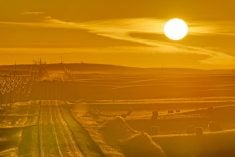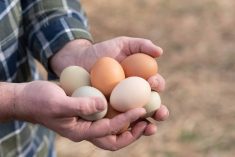Up on the shelf where we keep light bulbs of assorted sizes and wattages, I just happened across an old compact fluorescent lamp (CFL) — remember, those bulbs that looked like an Arby’s curly fry wrapped in thin white glass? Talk about a relic from a bygone time in western civilization when, it seemed, the best ideas anyone had to reduce our energy consumption were to extend the length of daylight saving time — a concept that will never make sense to me, no matter how many decades since I left Saskatchewan — and to legislate an end to the scourge of incandescent bulbs.
The Harper government’s light bulb decision probably wouldn’t have been the first time policy got way out ahead of both the quality of technology and the level of public desire to adopt it. It certainly wasn’t the last.
That brings us nicely to recent national news. If all goes as scheduled and current polling data holds, we Canadians get a new but very short-term prime minister come March, when Justin Trudeau steps down from the post. For Prairie farmers, Trudeau’s exit will mark the bookend on an era of federal agricultural policy measures hard-focused on mitigating climate change — most of which received little love at the farm gate.
Read Also

Gentle treatments for pain in the neck
Heading toward year-end, people unknowingly tense up against the cold and busyness, causing neck pain that can often be treated with appropriate support and gentle mobility, athletic therapist Kathlyn Hossack says.
Those, of course, included the national target to reduce greenhouse gas emissions associated with fertilizer application by 30 per cent below 2020 levels by 2030. The Liberal government would insist, repeatedly, that “there is no mandatory reduction in fertilizer use on Canadian farms,” and that the focus instead was on “measures that producers can take voluntarily to reduce their emissions over the long term, without curtailing growth in crop yields.” Rather, the government’s stated target was for a reduction in nitrous oxide emissions, whether by reducing emissions made during application or by reducing nitrogen losses off the field.
Farmers and farm groups were understandably wary of a policy that didn’t seem very supportive of the best management practices they’d already adopted to reduce emissions — and any messaging on the feds’ actual policy goal was often shouted down by pundits insisting farmers were being forced to cut their fertilizer use.
Past that, the feds’ carbon pricing scheme also found a way to scorch the farm sector even after most ag uses of fossil fuels were exempted. The government’s clear insistence on carbon-taxing the fuels used in grain drying and livestock barns — and the lengths to which parliamentarians went to prevent any new carve-outs for those fuels — came off as crass, especially as other equally understandable but weirdly specific carve-outs were granted in more politically-sensitive regions.
Surely, in either case, nobody intended to imply farmers would ever wilfully and wastefully let expensive inputs gas off into the air if anyone really had any better ideas — but farmers clearly have felt punished and penalized regardless.
The Liberals’ bigger-picture green policy goals also ran up against skepticism, or at least non-optimism. Research funding was streamed toward objectives related to climate change and environmental sustainability, whereas farmers and farm organizations hoped for more work on crop varieties better able to withstand not just future but present-day climate pressures. Of course, setting public research priorities is the prerogative of whatever government is in power, and some funding buckets will get filled more than others — it was ever thus — but many in the ag industry clearly found this government’s shift to new and different buckets jarring.
That said, let’s be honest: all these and any other specific woes farmers face under the Trudeau administration are never going to cost the Liberals politically. Most ridings you or I would consider “rural” have long since become safe Conservative seats either way. But Canada hasn’t been immune to the economic strains facing most democratic nations since the COVID-19 pandemic broke out, and several incumbent governments have since fallen or will soon take the fall for those pressures.
Looking further ahead into 2025, toward an election for which the outcome seems inevitable, the Conservatives will certainly want to put their own stamp on farm policy and have made clear the agriculture sector’s emissions will not be the priority they are today. But to state the equally obvious: the climate concerns that spawned the Liberals’ hated policies in the first place are not going away.
If the carbon tax is to be killed, it’s now time to move past the platitudes and name-calling and start stating who, if not front-line farmers, or the general public, will have to either cut emissions cold-turkey or pay much more for the fuel they burn or the emissions they produce.
I think it’s a fair question. I know 2013-era me would hate to think he bought those weird light bulbs just to free up grid capacity for a bunch of crypto farms and A.I. bots, but here we are.
About Edberg
Before you go, a quick correction: in the article “Techs finding ways to repair ag electronics” (Dec. 3, 2024, page 18) we misidentified the home base of ag tech repair company Arable Automation as “Edgar,” rather than Edberg, a village about 35 km south of Camrose. Typos happen and we’ve already fixed this one in the online version of that article, but we apologize to the people of Edberg and area.
Fun fact: the village isn’t directly named after a person or faraway place, nor for a guy named Ed Berg. Rather, it’s a portmanteau of “Edstrom,” an early settler family of the area, and “berg,” a Germanic-language term for a hill or mountain. I do know of other Prairie places that got great unique names in similar fashion: the site of a post office or rail siding needed a name right away, so local residents thought quickly and built a whole new name from parts on hand. If you live in or near such a place, drop me a line and tell me more.
















